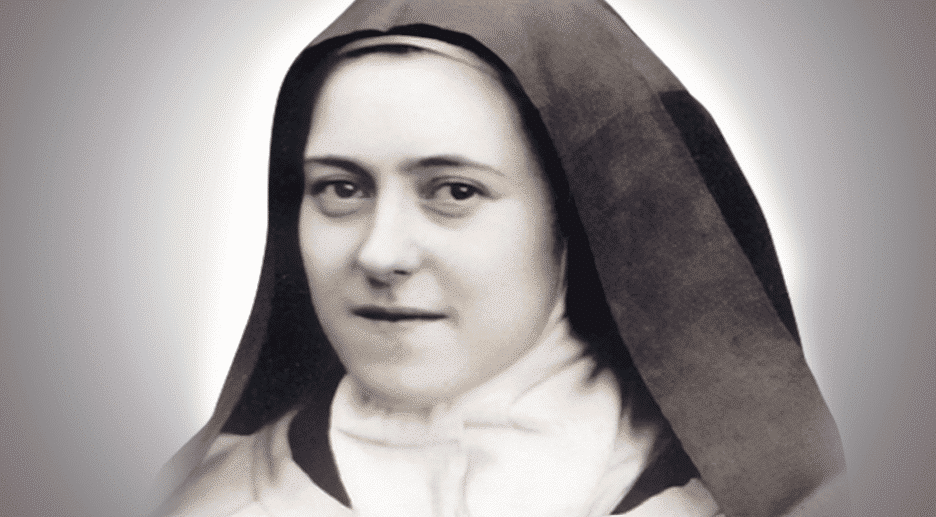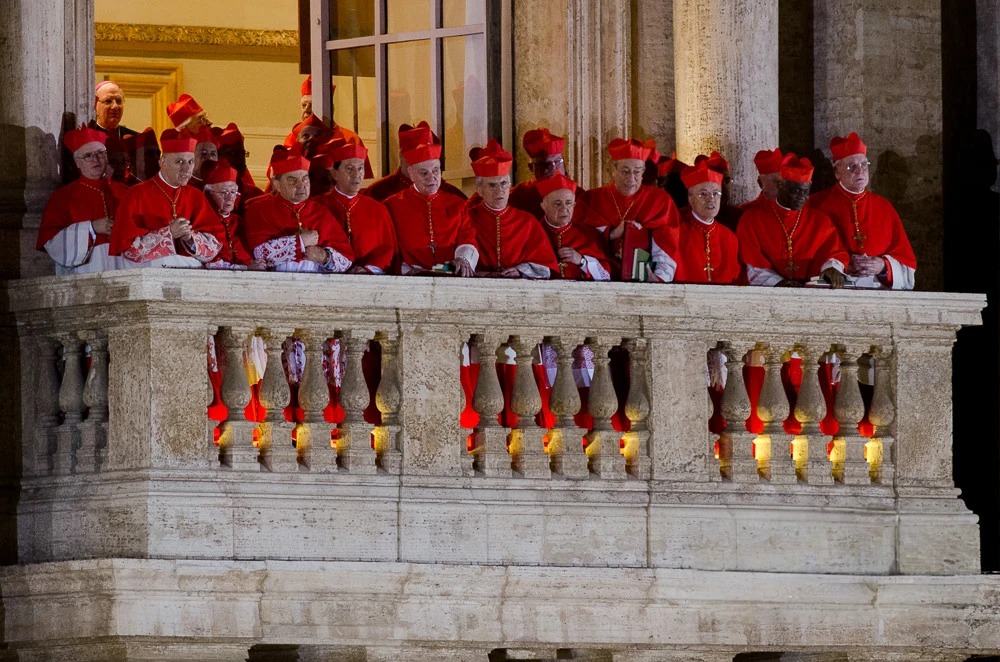Saint Therese of Lisieux, a life shaped by Love
Her feast day is celebrated today, October 1st

The priest José Antonio Valls offers this article on the figure of Saint Therese of Lisieux (of the Child Jesus), whose life was shaped by Love. Her feast day is celebrated today, October 1st.
***
It was half past eleven on the night of January 2, 1873, when Celia Guerin gave birth to the last of her daughters. Her father, Luis Martín, took her the next day to the town hall of her city, Alençon, to announce the birth of Maria Francisca Teresa. On Saturday, January 4, 1873, she was baptized in the Church of Notre Dame.
Shortly after her birth, she had to be placed under the care of Rosa Taillé, a peasant from nearby Semallé, where she would remain for just over a year until the danger passed. Back at home, she became the spoiled child of a family that for her would be an image of heaven. Together with her parents, she was surrounded by the affection of her sisters Maria, Paulina, Leonia and Celina. Of these early years of her life, she herself wrote: “God was pleased to surround my entire existence with love: My first memories are engraved with the most tender smiles and caresses! And if he had provided much love for me, he had also provided my little heart, creating it kind and sensitive; for I loved my father and mother very much, and I showed them my tenderness in a thousand ways.” 1
However, grief soon struck the Martin family hard. As a result of a blow to the chest with the corner of a table, Celia developed a very painful tumor. On August 28, 1877, when the little girl was four years and eight months old, her mother died, leaving a void from which she would take a long time to recover. She herself wrote: “My happy temperament changed completely. I, so lively and effusive, became shy and subdued and extremely sensitive. One look was enough to make me burst into tears, I was only happy when no one took care of me, I could not bear the company of strangers and only in the intimacy of the family did I regain my joy” 2. It took her ten years to overcome this hard blow.
After Celia’s death, Louis decided that the family would move to Lisieux to be closer to his late wife’s family. Isidore and Céline, together with their daughters Maria and Joan, would make the absence of their mother a little more bearable. However, a new blow was to fall on the little girl: her sister Pauline, who for her was her second mother, decided to enter the Carmel of Lisieux. “I did not know what Carmel was – she writes – but I did understand that Pauline was going to leave me to enter a convent. I understood that she was not going to wait for me and that I was going to lose my second Mother!… Alas! How can I express the anguish of my heart?… In an instant, I understood what life was. Until that moment it had never seemed so sad to me, but then it appeared before my eyes in all its crudeness, I saw that it was nothing but suffering and a continual separation” 3. At this moment, she also feels the call to Carmel, which she experiences with the certainty that it is a divine call and not just a childhood dream: “I wanted to go to Carmel, not for Pauline, but only for Jesus” 4.
But the absence of a mother’s love, which is fundamental for her, will have its consequences. Within a few months, Teresa is bedridden with strong tremors, hallucinations, weakness throughout her body… the doctor’s prescriptions do not work, nor is there a clear diagnosis. Finally, on the day of Pentecost, 1883, the Miracle occurs. While her sisters surround her bed praying for the sick woman, she fixes her gaze on the image of the Virgin, who would later be called “of the smile”. She herself recounts: “Suddenly, the Blessed Virgin appeared to me beautiful, so beautiful that I had never seen anything so beautiful. Her face radiated an ineffable kindness and tenderness, but what touched the depths of my soul was the charming smile of the Virgin. At that moment, all my sorrows vanished.” 5 Teresa is cured. What she needed most, a mother, God has given her in the smile of the Virgin Mary.
Although she had been cured, her weak psychology still had a long way to go before she was capable of giving herself completely to Carmel. On May 8, 1884, she made her first communion, of which she later wrote: “It was a kiss of love, I felt loved, and I said to myself: I love you, I give myself to you forever. There was no need for requests, struggles, sacrifices. For a long time, Jesus and poor Therese had looked at each other and understood each other.” 6 But the great grace in which she received the strength to take a great step forward in her career towards holiness would come on Christmas 1886. After midnight mass, Luis, her father, complained loudly that at the age of his youngest daughter (14 years old), he still had to fill her shoes with gifts. She, who under normal circumstances would have burst into tears, nevertheless firmly overcame it. She herself wrote: “On that night when she became weak, suffering for my love, she made me strong and courageous.” 7 Everything was ready for her to enter Carmel.
Her path to Carmel would be bumpy. Her desire to save souls grew in her soul. She prayed for Pranzini, a man condemned to death whom she considered “her first son.” She experienced Jesus’ thirst for souls… but the superior of Carmel refused her entry because of her young age. Not even a petition to Pope Leo XIII would get her permission. She would have to wait until April 9, 1888, the transferred feast of the Incarnation, for her entry. “The joy I felt was a serene joy,” she wrote. “Not the slightest breeze made the calm waters on which my boat sailed ripple, not a single cloud darkened my blue sky…” 8. At last, she had reached port.
Her life in Carmel would be the life of an exemplary religious who was at the same time small and hidden. God will purify her heart little by little, but firmly, through her father’s mental illness and the incomprehension of some of her religious sisters. Through the path that the Lord traces for her, she discovers a new way to reach Jesus. She, who from the beginning of her life had seen how love was taken from her by the death of her mother, had lived waiting for how to achieve love. Teresa had yearned for love all her life. At the end of her life, God teaches her that the Love she seeks cannot be bought, nor is it deserved by being perfect, but is received as a surprising gift. It is the discovery of the merciful Love of God: “The elevator that will lift me to heaven is your arms, Jesus!” 9. In 1896, she begins to have the first symptoms of tuberculosis that will end her life. It was on September 30, 1897, at the age of 24, that she crowned a life totally dedicated to Love.
Saint Teresa Benedicta of the Cross, admiring the story of Saint Therese, wrote: “Here is a human life shaped until the end solely and exclusively by the love of God.” And it is true. In her, we see clearly that divine Love is capable of shaping the entire life of man, no matter how weak our nature may be. In her, we see how the Love of God is capable of satisfying man’s thirst. In her, we have a friend who opens to us, like a treasure, the merciful heart of God. Saint Therese of the Child Jesus, pray for us!
____________
Manuscript (Ms) A, 4vº
Ms A, 13rº
Ms A, 26rº
Ms A, 26rº
Ms A, 30rº
Ms A, 35rº
Ms A, 69vº
Ms A, 45rº
Ms C, 3rº
Related

The Family: A School of Love, Forgiveness, and Hope
Laetare
25 April, 2025
3 min

Pope Francis: Leadership That Transforms Through Service
Javier Ferrer García
25 April, 2025
4 min

The heart of the Church beats between mourning and hope
Exaudi Staff
24 April, 2025
2 min

What is a Conclave? The Process That Elects the New Pope
Exaudi Staff
24 April, 2025
7 min
 (EN)
(EN)
 (ES)
(ES)
 (IT)
(IT)

